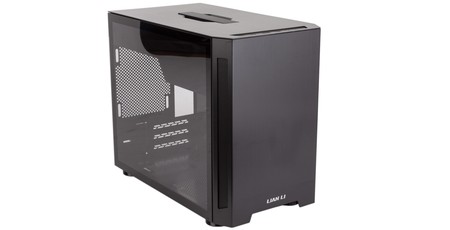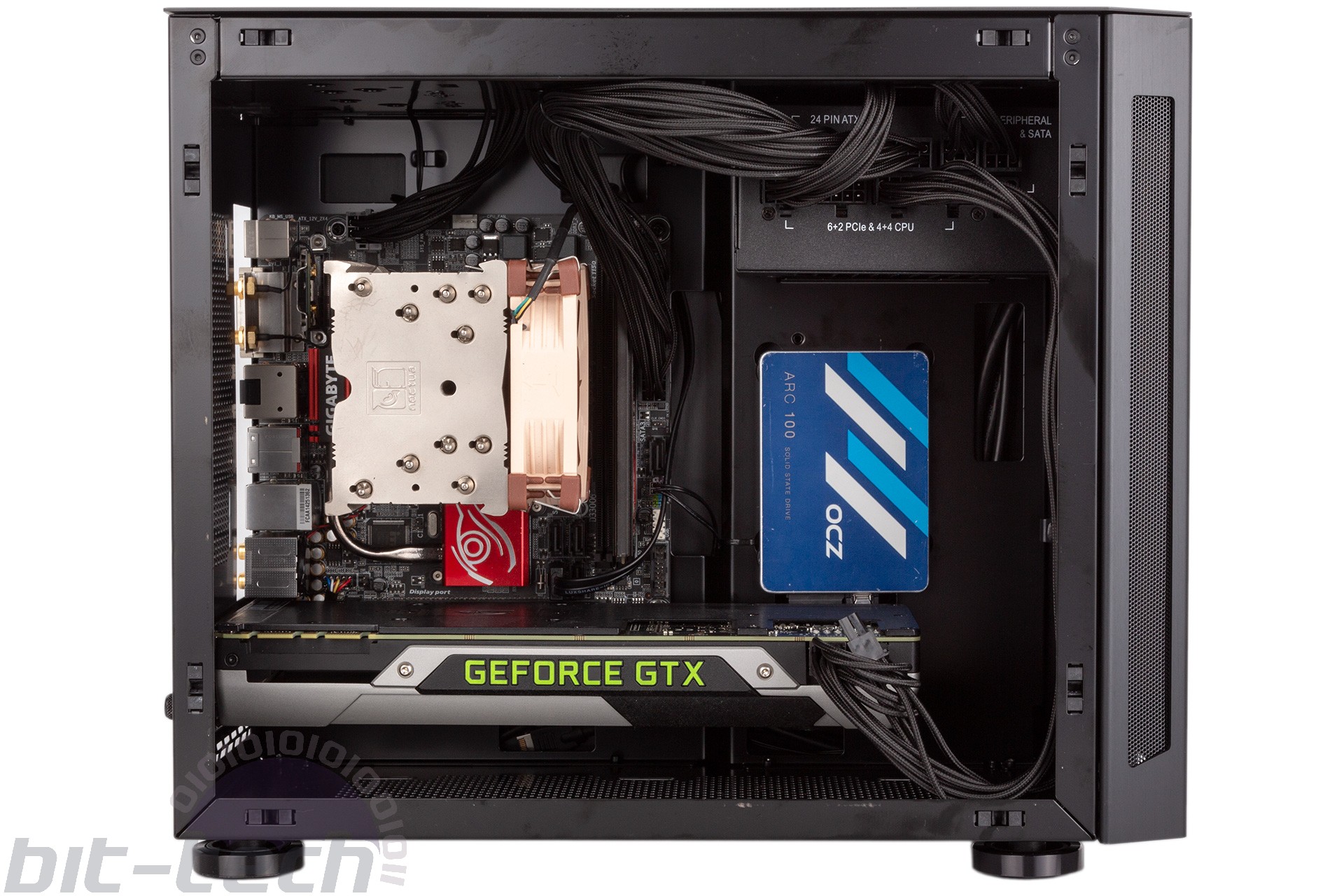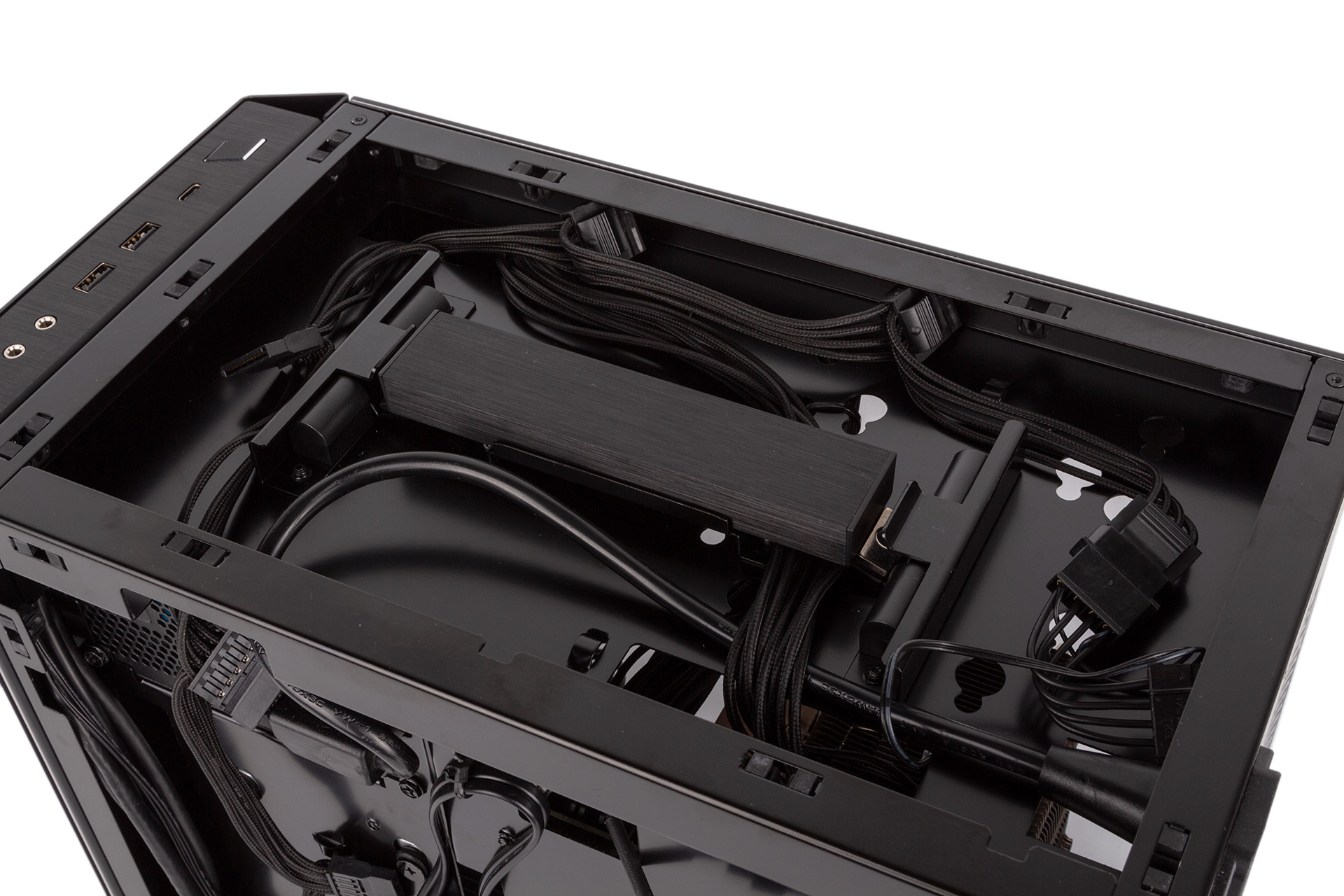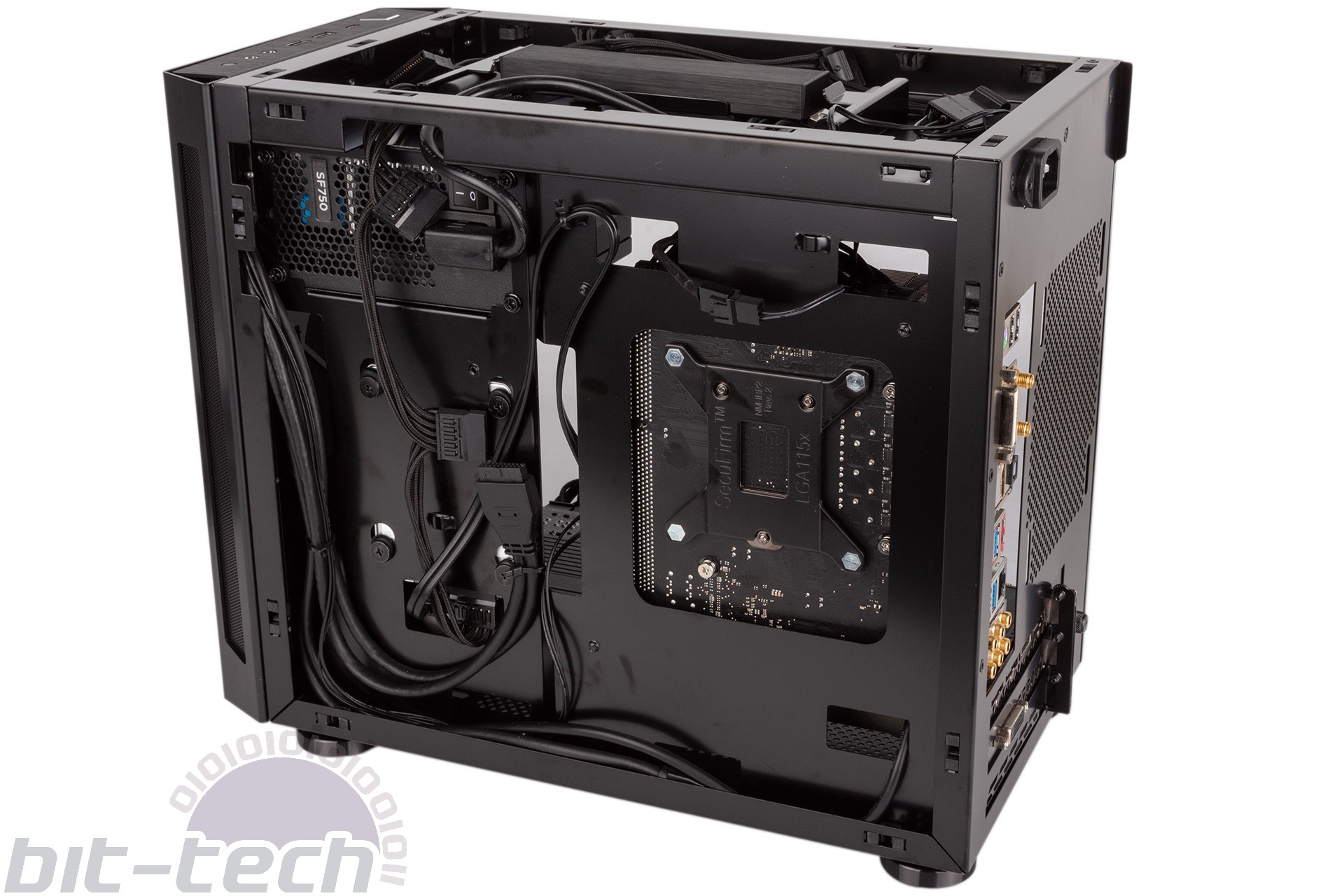
Performance Analysis
Out-of-box testing with zero fans highlights clearly the importance of airflow. While the GPU with its locked-speed fan is able to cope (albeit not that well) by dint of the fact its intake fan is so close to the ventilated bottom fan mounts, the CPU is left slowly cooking to the point where it actually throttled as a result of reaching its Tj Max. With a larger cooler and a faster fan, you’ll see better results, sure, but really the issue is that hot air isn’t leaving the case anywhere near fast enough, especially as the roof is entirely sealed off, preventing hot air from taking the most natural route out.

We then tried four different airflow configuration. For this, we used a bunch of Corsair SP120 fans, which aren’t ideal for case fan use, but they still shift air and we had a bunch of them to hand. We first tested the case with a single rear exhaust (our Big Air Cooling Investigation from years back found that when using one fan, ‘you’re better off getting hot air out of the case than pushing cool air in’), and then with a total of three fans: rear exhaust, front intake, and bottom-front intake. We initially ran the tests using the fans at full speed (12V) to simulate high-airflow fans, and then again at low speed (5V) to simulate low-noise/low-airflow fans.

A single high-speed exhaust fan works wonders, dropping both the CPU and GPU delta T values to within 2°C of having the same setup on an open test bench - an incredible difference given the throttling observed with no fans. The rear exhaust is absolutely the first position you should fill in this case; it’s all about preventing heat from building up inside. Even having a single low-speed (5V) fan here massively benefits both components, with the GPU only adding 1°C to its delta T compared to a single 12V fan (within margin of error) and the CPU keeping well clear of throttling levels. That said, the CPU is still very much on the warm side, achieving a delta T value of 62°C with a single 5V fan compared to a much healthier 47°C with the same fan at 12V – this result scales very clearly with the level of exhaust airflow, so we’d recommend playing around with fan voltages or PWM settings until you find a nice balance of noise and performance for your specific setup.
Adding a couple of intakes to the mix sees the CPU result fall even further when looking at 12V, although the additional benefit is pretty small compared to one fan. Three 5V fans generate enough airflow to knock a healthy 8°C off the CPU result when using one 5V fan, so this is the sort of setup we’d recommend if you’re after a more low-noise setup. Interestingly, the three-fan setups are actually worse than the single-fan one at both 12V and 5V when it comes to the GPU, albeit not by much and close to margin of error. Our best guess is that it’s to do with the bottom-front intake; the centre of the fan (typically a dead spot) aligns with the GPU’s intake fan, and could actually just be getting in the way rather than helping. This probably won’t be a problem with open-shroud designs.

In short, if you’re limited on fans, use the rear exhaust position with a decent speed (at least 7V or PWM equivalent) to ensure hot air is evacuated. If you have more fans to play with, you can more safely use lower speeds to reduce noise output, and we’d recommend starting with the front intake first before adding the bottom ones in, as the GPU is close enough to the floor that it doesn’t need the help as much as your CPU and PSU will.
Conclusion
The UK price we have is subject to change, as it’s from a retailer rather than Lian Li directly, but it tallies with the $99 price tag that was floating about way back at CES.
That’s expensive given the size, but not outrageous; at that price, we’d say it’s easily one of the best ITX offerings out there. Its balance of size, potential performance, and build quality is great. The handle, beautiful aluminium exterior, and the excellent panels are the stand-out features, plus you get USB 3.1 Gen 2 Type-C connectivity and good component clearance. The case holds up when it comes to airflow too, despite the largely sealed front panel.
Downsides include the lack of fans out of the box (the rear exhaust being filled would be nice) and the criminal absence of a bottom dust filter. Hopefully Lian Li can start including one at retail, since it can just be included as an accessory and doesn’t require new tooling. We’d also like to see rubber grommets on the cable routing holes. Still, the overall quality means this is an easy recommendation, and we reckon this could quickly become one of the most popular ITX cases going.


MSI MPG Velox 100R Chassis Review
October 14 2021 | 15:04








Want to comment? Please log in.